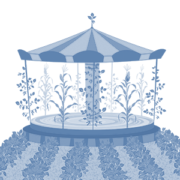Multiple and cover cropping in Brazil
Over recent decades the use of cover crops as part of the “sistema plantio direto” has become an important feature of Brazilian agriculture. In much of Brazil a second ‘safrinha’ (off season) corn crop is grown after a soy crop, and Brazilian safrinha corn is now a major contributor to the global corn supply. This report for the International Council on Clean Transportation reviews the status of cover cropping and safrinha cropping in Brazil, and discusses the potential for these crops to contribute to meeting biofuel feedstock demand. In the context of the European Renewable Energy Directive, it has been suggested that safrinha corn could potentially be treated as an intermediate crop and exempted it from limitations on support for food-based biofuels. The report argues, however, that as the safrinha corn crop is already well integrated into the global grain supply diverting it for biofuel use in Europe would create new land demand and under the terms of the Directive it could not therefore be exempted from the food-and-feed crop cap.
There may be opportunities to develop new second cropping systems either by finding ways to deliver economically viable harvests from cover crops already in use or by adapting winter crops such as brassica carinata to Brazilian conditions. Supporting the development of such models could provide a sustainable biofuel feedstock supply and provide long-term co-benefits in terms of food production.



 Cerulogy 2022
Cerulogy 2022